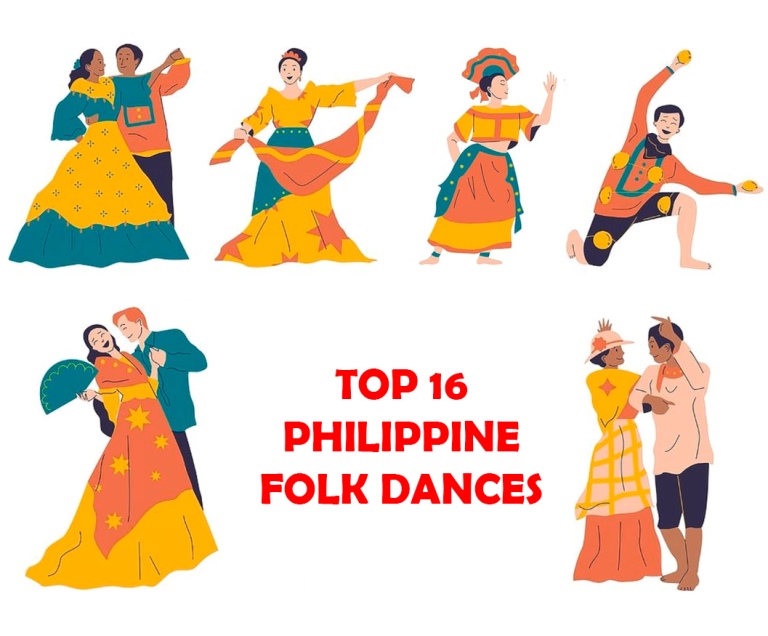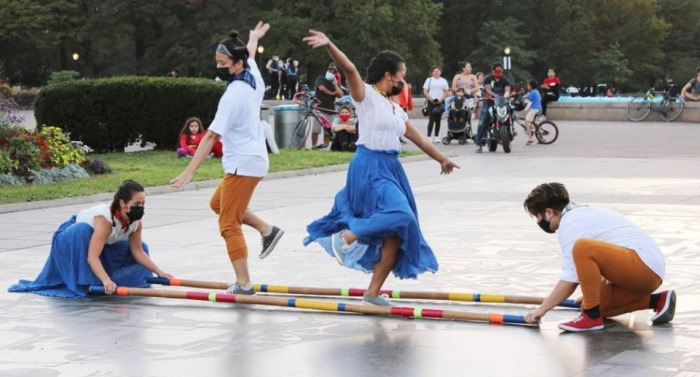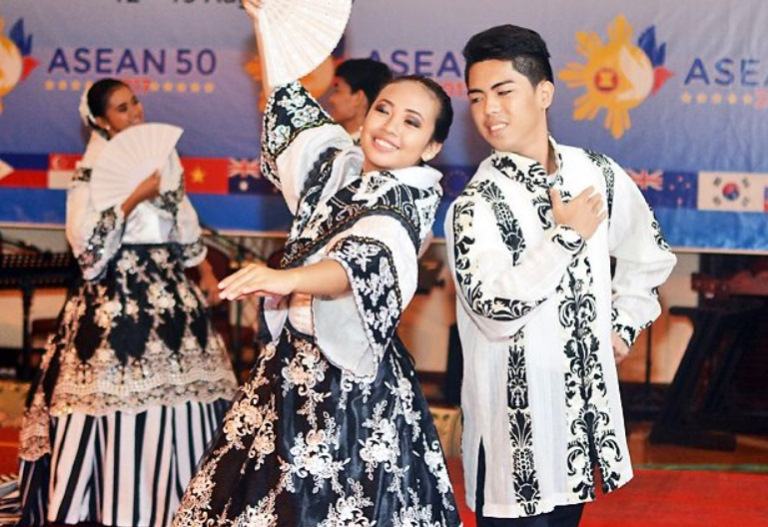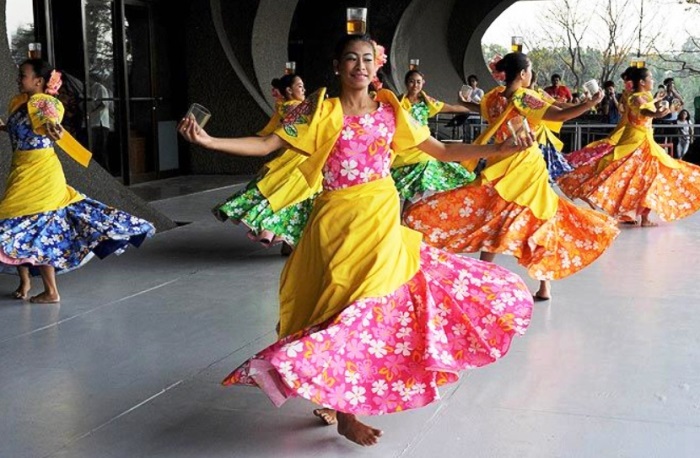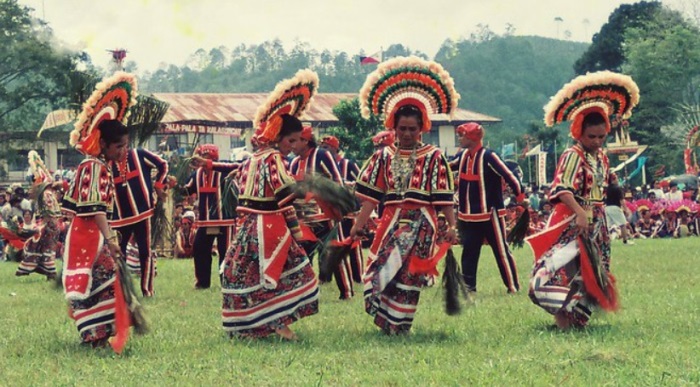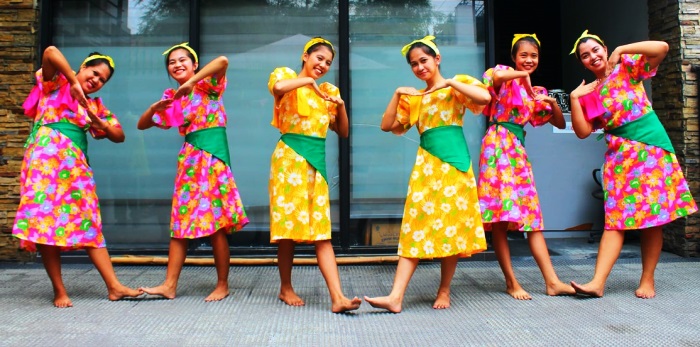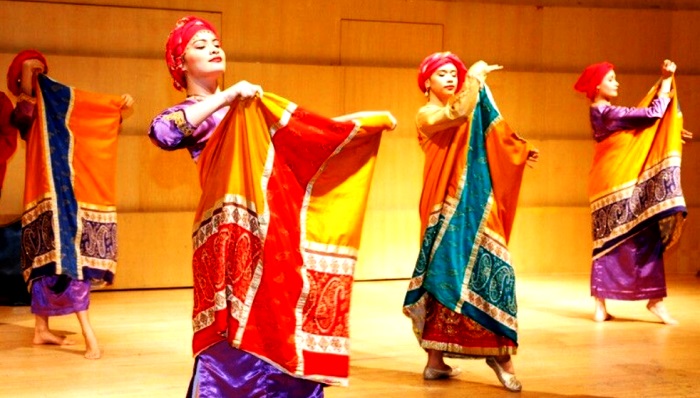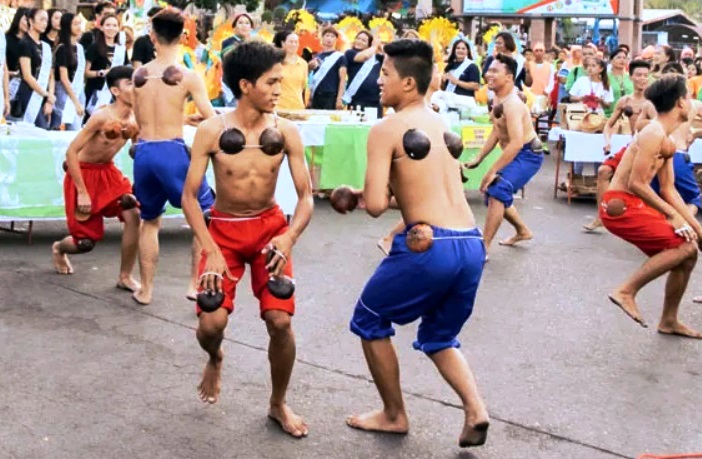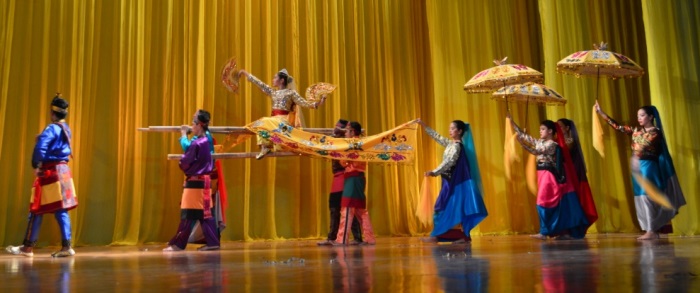The cultural heritage of the Philippines would proudly stand on the same level as any other country, and Philippine folk dances are a crucial part of its history.
From romance to love for nature and daily routines, these dances cover various aspects of Filipino life and offer an interesting view of the country’s traditions.
Table of Contents
List of 16 Philippine Folk Dances
1. Tinikling – The national dance of the Philippines
The Tinikling folk dance is widely considered the national dance of the Philippines. Its name is heavily tied to a local bird species called tikling and can be directly translated to “performing like tickling”.
This dance appeared during the Spanish colonization and originated on the island of Visayas.
Inevitably, different stories about the origins of Tinikling were spread. Many of them agree that the dance was first a punishment for Filipino workers if they fell behind compared to their fellas.
The workers would be hit in the feet with bamboo poles and they had to practice dodging so their conditions wouldn’t get worse. With time, it became a form of art and a sign of Filipino pride.
When a Tinikling performance begins, it immediately impresses people with imitations of the tikling birds: walking through grasses, dodging farmer’s traps, or running pass branches.
To achieve such movements, dancers cleverly make their way through parting and clapping poles without getting stuck in between.
Tinikling has survived the test of time and remained strong to this day. It can be combined with other folk dances in shows or associated with modern music to create a connection between Filipino history and modern life.
In the Philippines, you have a higher chance of seeing a Tinikling performance on Sundays.
You’ll love: 4 Types of Famous Traditional Hawaiian Dance
2. Cariñosa
With a direct translation as “affectionate” or “loving”, it is easy for us to predict Cariñosa is a dance with a romance theme even when we haven’t watched it. That impression isn’t wrong at all!
Cariñosa is also another dance that was first introduced to the Panay island of the Philippines by the Spaniards, which might be why you stumbled upon the name while learning about Spanish dances.
The original and most acknowledged Cariñosa involves a hand fan or a handkerchief to mimic the hide-and-seek game between the couple.
However, in the Bicol region, the dancers will hold onto two ends of the handkerchief for this playful movement. It is quite complex, yet Bicol people still keep this tradition in their gatherings.
To showcase the nationalism of the Philippines, its people wear traditional Filipino costumes instead of Spanish outfits. However, Cariñosa didn’t pass as an official dance of the country.
3. Binasuan
You will hardly find a more colorful and joyful dance than Binasuan in Filipino culture. Let me ask you first: Do you think you can dance while holding your drink without spilling it?
Binasuan’s literal meaning is ‘use/have drinking glasses’ in the language of Pangasinan province. It is a test of balance for its performers because the prop glasses they hold are at least halfway filled with a beverage.
These glasses are carefully placed on the dancer’s head and hands, hence they must maintain balance extremely well while moving their arms in grand circular motions.
There are no gender restrictions for the performers of Binasuan. However, the dance is mostly for festive occasions or weddings, hence the female dancers with more intricate costumes tend to be the favorites of the crowd.
4. Dugso
Unlike many folk dances originating or adapted from foreign countries, Dugso is one of the rare dances that is completely indigenous and unique to Filipino people.
Its hometown is believed to be Mindanao, specifically the northeastern area of Bukidnon.
Rather than for entertainment, Dugso was originally a ritual dance to pay the utmost respect to the highest-regarded religion or deity of the locals.
It expresses gratitude for health, harvest, and fortune. On the other hand, it can also ward off evil spirits and bless a newly opened business.
Due to the meaning and purpose of the dance, Dugso is usually colorful and cheery.
Dancers wear colorful headpieces with a resemblance to the pagpagayok birdies and ankle bells with sounds resonating with souls and impacting spirits.
5. Itik-itik
In the Tagalog language, itik means a duck and, to no one’s surprise, Itik-itik is an imitation of a duckling’s movements. Its origin is in the province of Surigao.
The most well-known myth says a maiden named Kanang was the creator of this dance. She was recognized as the most talented dancer of Surigao with various invitations to perform in important events.
During a performance for a baptism party, she was greatly inspired by the rhythm and the melody, subsequently improvising movements of the duck waddling, flying, and splashing water on its own back.
The spontaneous dance immediately became popular with many variations in other towns and regions of the country, although the original Surigao version remained the most influential.
Today, you will see the younger generations learning Itik-itik and performing it in festive gatherings more often than at baptismal ceremonies like when it first appeared.
6. Kapa Malong-Malong
Quite different from the dances we have been discussing, Kapa Malong-Malong (or Sambi sa Malong) is a Filipino folk dance with a strong influence on Muslims.
The roots of the dance are in Mindanao and the Maranao people residing here.
People often favor malong, a plain yet extremely functional clothing item. And, the dance is an artistic, witty instruction on how to wear malong in different ways.
It is thus quite obvious that malong is an essential part of the performance. These tube-shaped skirts are either handwoven or machine-made, featuring geometric patterns and multiple colors.
If you find the name unfamiliar, you can refer to the sarong of Malaysian and Indonesian people.
As both men and women can put malong on as well as the diversity of purposes, the ways they wear these pieces on stage and consequently the moves can also vary significantly.
7. Kini Kini
Kini Kini is the emphasis of the term “Royal Walk”. It came from the Maranao people, although it is only performed by women wearing colorful scarves while a man sits in the background and looks over them like true royalty.
The background music of Kini Kini is typically drums and kongs played at an extremely fast pace. Due to the nature of these instruments, Kini Kini music sounds solemn instead of cheerful.
Corresponding with the music, the performers will take small and rhythmical steps in a fixed pattern while holding one or two handkerchiefs and waving them by raising and dropping their arms.
They are also required to showcase a relaxed facial expression.
The utmost challenge about Kini Kini is how to remain graceful while moving to the accompanying music or changing the format, because the dance is all about imitating and visualizing the elegant, well-trained steps of the elite.
8. Kuratsa
If you visit the Visayas region and attend a social gathering, you have a good opportunity to see people dance to Kuratsa because it is a favorite here.
Although some researchers associate it with the La Cucaracha dance of Mexico, Kuratsa is very unique, even in its music.
On the other hand, Filipino scholars believe the origins of Kuratsa are Kigal and Bikal. Kigal is a dance step similar to Kuratsa and Bikal is an art of dancing with impromptu songs – neither of them was part of La Cucaracha.
Kuratsa is a courtship dance for couples, mimicking a rooster and a hen. The most strict rule to follow is that one couple performs at a time and no one should interrupt until their turn.
A standard Kuratsa performance includes three sections.
- First, the duo dances to a waltz.
- The music accelerates in the second part as the male chases his partner in pursuit.
- The finale is when he has successfully courted the woman, hence the music also becomes faster to celebrate his triumph.
At weddings, Kuratsa differs a bit and turns into a money dance. The families and friends of the newlyweds will pin lucky money on their costumes, praying for prosperity and good fortune.
9. Maglalatik
My next honor is Maglalatik, a dance with all-male performers. Its name can be translated as “the maker of latik” (latik is a product of coconut, used in cooking).
The original Maglalatik focuses on demonstrating a fight between Christians and Moros for latik, hence it is also seen as a war dance. A more lighthearted view considers it a mock battle of the boys.
The main props in Maglalatik are coconut shells held in the dancers’ hands or attached to their vests. They will clap these shells against one another and follow the drumbeat.
Furthermore, they need to make the dance more impressive with trapping and boxing techniques cleverly incorporated into the choreography.
10. Pandanggo Sa Ilaw
Does the name remind you of the Fandango dance? You are on the right track! Pandanggo Sa Ilaw was created during the Hispanic era with inspiration from the Spanish dance.
At first, it was popular among the elite class, before its popularity reached the communities and even the rural regions of the country.
By the beginning of the 18th century, people simply grouped all the lively and joyful dances into one Pandanggo.
The inclusion resulted in numerous versions across the regions, though Pandanggo Sa Ilaw (Pandanggo with lights) of Oasioas and Mindoro remained the most popular.
The lights are truly nice props that can steal the audience’s attention effortlessly.
You can find a Pandanggo performance on any social occasion, especially religious processions, and rituals, since it has gradually turned into a folk dance that is heavily tied to people’s lives.
11. Pangalay
The literal meaning of pangalay is “an offering”, though the Sanskrit people also acknowledge it as “a temple of dance”.
Dance enthusiasts are always able to see the similarities between Pangalay and dances in nearby countries like Cambodia, Thailand, or Malaysia.
The rightful creators of Pangalay are the Tausūg people on the eastern Sabah coast and the Sulu Archipelago.
Of all the dances that originated from the Southern Philippines, Pangalay is widely accepted as the most Asian dance due to the high level of flexibility and dexterity from the shoulders to the fingers.
Pangalay’s concept is based on the celestial angels in Buddhist and pre-Islamic studies. Therefore, you will see the dancers showing their downcast eyes with a dignified expression.
The long fingernails are another signature of Pangalay, though bamboo castanets proved to be a more convenient addition.
They can bend forward and lower their knees while conveying feelings with arm and hand movements. However, unnecessary body or hip movements are considered faults.
12. Pantomina
Pantomina is the derivation of pantomime, a Spanish term for the art of courting. It was previously known as Salampati, hence the reference “dance of the doves”.
A wedding in Bicol would feel incomplete without a Pantomina appearance. Its popularity went to the opposite land of Bicol, especially in Capul and Allen.
The performers are the main couple and guests who are close to them or want to wish them luck.
According to the tradition, the wedding couple will start the performance. Guests can throw coins in their directions and place lucky money in a prepared place.
If the couples are not wearing traditional wedding costumes already, they can change to them for more convenience and comfort when executing the leisure and the waltz steps in the dance.
13. Rigodon de Honor
As you can see from the name, Rigodon de Honor is an elegant and solemn dance.
Before it was introduced to Filipinos, it was already popular in the courts of Spain and France. You would only see it at balls and galas, followed by a slow waltz.
From the 16th century until now, it was meant to portray an elevated status among participants. The powerful individuals, especially in the government, used to be the only ones who partook in Rigodon de Honor.
Although the targetted group of the dance is expanded now, it is still limited within formal settings.
The host will announce the pairs at the beginning and then position the duos throughout the ballroom. The performers tend to put on their best traditional dresses: ternos and barongs.
While not particularly tricky in steps, Rigodon de Honor requires elegant posture and precise moves from the performers, even more so when they move across the floor and change the format.
14. Sagayan
Sagayan started as a war dance of Iranun, Maguindanao, and Mindanao depiction of Prince Bantugan, a hero in Filipino history. The story behind the dance mostly revolves around the battles he fought and won.
The performers will imitate Prince Bantugan’s warriors using props – shields and double-edged swords.
It is quite physically demanding as they have to do so much rolling as if they are standing around the prince and trying to protect him with their life.
This dance is mostly for the annual festival of Sagayan, so you will often find it with powerful drumbeats and traditional three-layered skirts. The colors vary with little restriction, though red and yellow are the main themes.
15. Singkil
The Muslim group in Mindanao also has Singkil to contribute to the rich heritage of Filipino folk dances. Despite the various origins spread among the locals, most of them agree that this dance is fairly new.
Some scholars believe Singkil was created and developed by Lanao Lake, while others insist it was brought here by a traveler. However, different origins don’t change the depiction of a prince and a princess dancing amidst bamboo poles.
Today, Singkil has embraced a lot of changes and elements from external factors. People interpret the stories of Prince Bantugan and Princess Gandingan differently too, leading to many versions of the dance.
The Bayanihan dance company is currently the most involved group in the Singkil dance. The portrayals Bayanihan created are so popular and accepted that people tend to accept them as the authentic version.
16. Subli
Formed by two terms, subsób (“bent” or “fall face first”) and balî (“broken” or “bent”), Subli directly refers to the posture of the male in this dance.
Subli originated in Batangas and spread to the southwest of Luzon. The story revolves around a couple: an alcoholic and gambling-addicted husband and a wife who had always tolerated and endured his abusive ways.
One night, he returned from another frolicking night and found no water or food at home.
Furiously, he ordered the wife to go and get some water quickly, even though the well was rather far away. Strangely enough, she completed the task and came home in no time.
Full of doubts, the husband told the wife to bring more water back and discreetly followed her to figure out the mystery.
The shocking truth hit him when he saw the intimidating cross-shaped tree giving her water. Punishment fell upon him timely as a blinding light flared up.
The Subli dance is tied to Catholic practices and is traditionally performed on the Mahal na Poon feast. You can also watch Subli in healing rituals, graduation ceremonies, birthday parties, and pretty much any auspicious occasion except Lent.
Final Words
This brief list of folk dances in the Philippines certainly cannot include every dance that has been present in the country’s long and enriched history.
Therefore, I will be sure to update it regularly, and I would love to receive your contributions as well!
If you have watched any Filipino dances in person or even learned them, don’t forget to share your precious experience!
